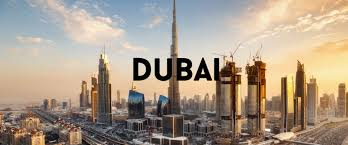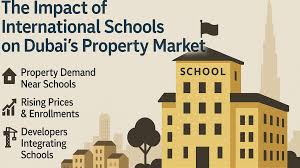Now Reading: Sustainable Living in Dubai: Green Building Trends and Tax Incentives in 2025
-
01
Sustainable Living in Dubai: Green Building Trends and Tax Incentives in 2025
Sustainable Living in Dubai: Green Building Trends and Tax Incentives in 2025
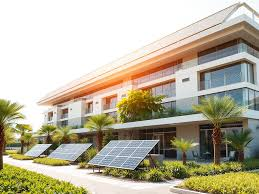
Table of Contents
Sustainable Living in Dubai: Dubai’s commitment to sustainability in 2025 is transforming its real estate landscape, with green building trends gaining momentum as part of the Dubai 2040 Urban Master Plan and the UAE Net Zero by 2050 initiative. These efforts align with global environmental goals and cater to growing buyer and tenant demand for eco-friendly properties, particularly in the luxury and mid-tier segments.
Coupled with tax incentives introduced under the UAE’s 2025 corporate tax reforms, sustainable real estate developments are becoming a cornerstone of Dubai’s market, enhancing appeal for investors, including those leveraging the Golden Visa Program. Below is a detailed analysis of green building trends, tax incentives, and their implications for sustainable living in Dubai in 2025, with connections to luxury real estate trends, rental market dynamics, and taxation frameworks discussed previously.
Green Building Trends in Dubai (2025)
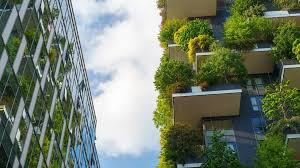
- Rise of Green-Certified Developments:
- Market Growth: Approximately 35% of real estate sales in 2025 are projected to be green-certified (e.g., LEED, BREEAM), up from 15% in 2020, reflecting a shift toward sustainable properties.
- Key Projects: Developments like Dubai Sustainable City, The Sustainable City – Yas Island, and Emaar’s The Oasis integrate energy-efficient designs, solar panels, and water recycling systems. These projects reduce water and electricity consumption by up to 20–30%, appealing to eco-conscious buyers and tenants.
- Luxury Integration: Luxury developments, such as branded residences in Palm Jumeirah and Dubai Hills Estate, incorporate green features like smart energy management and sustainable materials, aligning with the 5–10% price growth and 6–9% rental yields noted in the luxury real estate analysis.
- Smart and Sustainable Technologies:
- IoT and AI Integration: Internet of Things (IoT) sensors and artificial intelligence (AI) systems optimize energy use, water management, and waste reduction. For example, DAMAC Lagoons uses AI-driven climate control to cut energy costs by up to 30%, meeting buyer preferences for smart homes.
- Solar Power: Solar panels are increasingly standard, with projects like Masdar City generating 10–15% of energy needs via solar. This aligns with the Dubai Clean Energy Strategy 2050, targeting 75% clean energy by 2050.
- Water Conservation: Greywater recycling and low-flow fixtures reduce water use by 20–25% in developments like Dubai Hills Estate, addressing Dubai’s water scarcity challenges.
- Biophilic Design and Urban Greenery:
- Design Trends: Biophilic elements, such as green walls, rooftop gardens, and natural lighting, are prevalent in luxury projects like Mira Villas by Bentley Home. These designs enhance resident well-being and reduce cooling costs by 10–15%.
- Urban Planning: The Dubai 2040 Urban Master Plan prioritizes 60% green public spaces, with initiatives like The Green Planet and community gardens in Jumeirah Village Circle (JVC) fostering sustainable living.
- Tenant Appeal: As noted in the rental market dynamics, tenants prioritize properties with parks and green spaces, boosting demand in family-friendly areas like Arabian Ranches.
- Net-Zero and Carbon-Neutral Goals:
- Zero-Energy Buildings: Projects like Masdar City aim for net-zero energy status, using passive cooling, high-efficiency insulation, and renewable energy to minimize carbon footprints.
- Carbon Offsetting: Developers like Emaar and Aldar offer carbon offset programs, allowing buyers to invest in regional renewable energy projects, aligning with UAE’s Net Zero 2050 goals.
- Market Impact: These initiatives drive demand for sustainable properties, with green-certified homes selling 15–20% faster than conventional ones.
- PropTech for Sustainability:
- Digital Tools: Platforms like Bayut and Property Finder highlight green-certified properties, while the Dubai PropTech Hub (launched May 2025) fosters AI-driven solutions for energy monitoring and waste management.
- Smart Rental Index: As discussed in the Smart Rental Index overview, the index’s real-time data includes sustainability metrics (e.g., energy efficiency ratings), influencing rental valuations and encouraging landlords to adopt green upgrades.
Tax Incentives Supporting Green Building in 2025
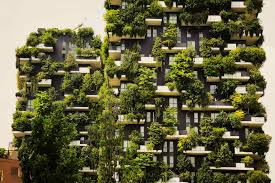
- R&D Tax Credits:
- Overview: Under the UAE’s 2025 corporate tax reforms, businesses investing in research and development (R&D) for sustainable technologies can claim tax credits of 30–50% (effective 2026), reducing taxable income above AED 375,000 (subject to the standard 9% corporate tax).
- Eligibility: Applies to developers, real estate firms, and freelancers innovating in green technologies, such as IoT energy systems, solar panels, or sustainable materials.
- Real Estate Impact: Developers like DAMAC Properties and Emaar can offset tax liabilities by investing in eco-friendly features for projects like The Oasis or DAMAC Bay 1, aligning with buyer preferences for smart, sustainable homes.
- Free Zone Tax Benefits:
- Overview: Qualifying Free Zone Persons (QFZPs) in areas like Dubai Multi Commodities Centre (DMCC) or Dubai International Financial Centre (DIFC) maintain a 0% corporate tax rate on qualifying income (e.g., international green tech services) if compliant with Economic Substance Regulations (ESR).
- Real Estate Context: Free Zone-based real estate firms or freelancers developing sustainable projects for international clients (e.g., Golden Visa investors) benefit from 0% tax, but mainland income (e.g., rentals in Dubai Marina) is taxed at 9% above AED 375,000.
- VAT Considerations:
- Exemptions: As outlined in the VAT overview, residential property sales and leases are VAT-exempt, reducing costs for buyers and tenants of sustainable homes. For example, a green-certified villa in Dubai Sustainable City incurs no VAT on purchase or lease.
- Taxable Supplies: Commercial properties and real estate services (e.g., consultancy for green projects) are subject to 5% VAT, requiring registration for businesses with supplies above AED 375,000.
- Input VAT Recovery: Developers can recover input VAT on sustainable construction costs (e.g., solar panels, energy-efficient materials) for commercial projects, but not for residential ones, necessitating careful expense allocation.
- Employment Incentives:
- Overview: The 2025 tax reforms offer refundable tax credits for hiring high-level executives or professionals in sustainability-focused roles, supporting firms developing green real estate.
- Impact: Real estate companies hiring sustainability experts for projects like Masdar City can reduce tax burdens, enhancing project viability.
Implications for Sustainable Living in Dubai
- Buyer and Tenant Demand:
- Luxury Market Synergy: As noted in the luxury real estate analysis, buyers prioritize LEED-certified properties with smart home features, driving demand in areas like Palm Jumeirah (36% ROI) and Dubai Hills Estate (41% ROI). Green features command 15–25% price premiums.
- Rental Market Impact: The Smart Rental Index 2025 incorporates sustainability metrics, rewarding green-certified buildings with higher star ratings and justifying premium rents. Tenants in areas like JVC or Dubai Marina seek eco-friendly properties, boosting yields (6–9%).
- Golden Visa Appeal: Investors targeting the AED 2 million Golden Visa threshold prefer sustainable properties in luxury areas, leveraging VAT exemptions and potential R&D tax credits.
- Investor Opportunities:
- High ROI: Green-certified properties offer strong returns due to faster sales (15–20% quicker) and high rental demand, particularly for short-term rentals (18% growth) in tourist-heavy areas like Business Bay.
- Tax Savings: R&D credits and Free Zone exemptions reduce costs for developers, making sustainable projects financially attractive. For example, a developer in DMCC can claim 0% tax on international green tech services.
- Market Growth: The projected 2.45% annual growth in the mid-to-upscale residential market through 2029 is partly driven by sustainable developments, supported by Dubai’s 6.2% GDP growth forecast.
- Developer Strategies:
- Innovation Investment: Developers like Emaar and Aldar are investing in green technologies to qualify for R&D credits, reducing tax liabilities and aligning with buyer preferences for smart, eco-friendly homes.
- Compliance Costs: As discussed in the taxation overviews, developers must navigate 5% VAT on commercial projects and 9% corporate tax on income above AED 375,000, requiring robust accounting systems for input VAT recovery and tax credit claims.
- PropTech Integration: The Dubai PropTech Hub supports AI-driven energy monitoring and blockchain for transparent green certifications, enhancing project credibility.
- Challenges:
- High Initial Costs: Green technologies like solar panels or greywater systems increase upfront costs, though tax credits and long-term savings (20–30% on utilities) offset expenses.
- Compliance Burden: Developers and freelancers must adopt eInvoicing (proposed for 2025) and maintain IFRS-compliant records for VAT and corporate tax, increasing administrative costs.
- Market Education: Some buyers and tenants may lack awareness of green benefits, requiring marketing efforts to highlight ROI and lifestyle advantages.
- Economic and Environmental Impact:
- Sustainability Goals: Green buildings support Dubai’s Net Zero 2050 and Clean Energy Strategy, reducing carbon emissions and water use.
- Economic Diversification: Tax revenues from VAT and corporate tax fund infrastructure, enhancing sustainable urban development and supporting the D33 Economic Agenda.
Green Building Trends
- Green-Certified Developments: 35% of 2025 sales are LEED/BREEAM-certified, up from 15% in 2020. Projects like Dubai Sustainable City and Emaar’s The Oasis reduce utility use by 20–30%.
- Smart Technologies: IoT and AI optimize energy and water use; solar panels in Masdar City generate 10–15% of energy needs.
- Biophilic Design: Green walls, rooftop gardens, and natural lighting in luxury projects like Mira Villas by Bentley Home cut cooling costs by 10–15%.
- Net-Zero Goals: Zero-energy buildings and carbon offset programs align with UAE Net Zero 2050.
- PropTech: Dubai PropTech Hub and Smart Rental Index integrate sustainability metrics for transparent valuations.
Tax Incentives
- R&D Credits: 30–50% tax credits (effective 2026) for green tech investments, reducing 9% corporate tax on income >AED 375,000.
- Free Zone Benefits: 0% corporate tax on qualifying income (e.g., international green tech services) in DMCC, DIFC, if compliant with ESR.
- VAT Exemptions: Residential sales/leases exempt; input VAT recoverable on commercial green projects.
- Employment Credits: Refundable credits for hiring sustainability experts.
Implications
- Buyers/Tenants: Demand LEED-certified, smart homes in Palm Jumeirah (36% ROI), Dubai Hills Estate (41% ROI). Smart Rental Index rewards green properties with higher rents.
- Investors: Green properties sell 15–20% faster, offer 6–9% yields, and attract Golden Visa buyers (AED 2M threshold).
- Developers: R&D credits and VAT recovery reduce costs; eInvoicing and IFRS compliance add administrative burden.
- Challenges: High initial costs, compliance complexity, and need for market education.
Recommendations
- Buyers/Investors: Target green-certified properties in high-ROI areas (e.g., Dubai Marina, 84% ROI) for tax benefits and demand.
- Developers: Invest in green tech for R&D credits; use PropTech for transparency.
- Landlords: Upgrade properties for higher Smart Rental Index ratings and premium rents.
- Compliance: Register for VAT (>AED 375,000 supplies) and corporate tax (>AED 375,000 income) by March 31, 2025; adopt eInvoicing.
- Stay Informed: Monitor DLD (www.dubailand.gov.ae) and FTA (www.tax.gov.ae) for updates.
Conclusion

Dubai’s green building trends in 2025, driven by LEED-certified projects, smart technologies, and biophilic designs, are reshaping sustainable living, aligning with the Dubai 2040 Urban Master Plan and Net Zero 2050 goals. Tax incentives, including 30–50% R&D credits and Free Zone exemptions, reduce costs for developers and investors, while VAT exemptions on residential properties enhance affordability.
The Smart Rental Index 2025 supports green properties with premium valuations, boosting demand in luxury areas like Palm Jumeirah and Dubai Marina. Despite challenges like high initial costs and compliance burdens, sustainable real estate offers strong ROI and aligns with Golden Visa-driven investment trends. Stakeholders should leverage DLD resources (www.dubailand.gov.ae), consult experts like Emaar or Aldar, and adopt PropTech for informed decisions.
READ ALSO: Dubai’s Digital Rental Index 2025: Enhancing Transparency in the Rental Market



